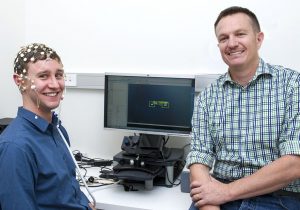Two new ways to treat back pain
Changing the way we think about pain and our perception of it may be a key factor in bringing relief to those with chronic low back pain. Four million Australians suffer from low back pain at any time. Around 40% of people with a new episode of low back pain will go on to develop chronic back pain, which is pain that has persisted for longer than three months.

Dr James McAuley
The most common treatment for chronic low back pain is exercise, but research has shown this is often only marginally more effective than placebo. A new approach to managing – or, even better, alleviating – back pain is desperately needed.
Early pilot investigations conducted by my team have revealed that two novel treatments – an Explaining Pain program and sensorimotor retraining – have been effective in providing significant improvements to low back pain and functioning.
We recently started clinical trials that would compare the two programs individually as well as together, to assess the benefits they can bring to patients. Our hope is to develop targets for new interventions that lead to full recovery. Current treatments give people the resources to function despite their pain. We want to move beyond that and relieve them of their pain altogether.
The Explaining Pain program aims to clarify the nature and purpose of pain and make clear to patients at risk of developing chronic low back pain that a diagnosis does not mean their pain will be permanent. For most people back pain is a normal, if distressing, part of life. Our program emphasises that pain is an adaptive response and reminds people that it will go away. Pain is our brain’s way of alerting us to a potential threat. Understanding all of the sources of that threat is often enough to reduce pain intensity and help recovery.
For those who experience chronic low back pain, a more intensive approach is often needed. This is the point at which sensorimotor training can be introduced to reduce pain and improve mobility.
Sensorimotor retraining is based on the cortical-body matrix, which is an integrated network of neural pathways that detect pain and aim to return the body to a normal state of functioning.
There is compelling evidence that chronic back pain is associated with a disruption of this cortical-body matrix, and that correcting this disruption via a series of sensorimotor tasks can relieve pain.
Earlier studies showed that people with chronic back pain felt that their back wasn’t moving as it should. They felt they couldn’t control their back properly. Also, when we touched their back, they were unable to accurately identify where they were being touched or to discriminate between different types of touch.
This leads us to believe there are issues around how a person perceives the functioning of their back and the associated pain, so we developed the sensorimotor retraining treatment to intervene. These tasks interrupt and correct the way the signals from the back are processed by the brain. With repetition people get better at accurately processing the signals and their symptoms decrease.
People currently involved in the clinical trials show improvements after three months, giving hope to the hundreds of thousands of Australians who face this major health challenge daily.

Hi ,
How can I found out more about the sensorimotor training, currently in the UK suffering LBP. Anything I could try out?
Hello. As a Movement Educator currently training in Clinical Somatic Education (a movement education process which involves the sensorimotor system) I am very interested in what you define as sensorimotor training. Please would you elaborate? Many thanks
Interesting to hear and a way forward. I’ve been using sensorimotor training on a background of the individual having a working knowledge of their pain (moment to moment self-coaching: what do I need to think-do at any given moment) for some years.
Hi nice to hear about this research.I am from Brunei. I am at the moment managing a chronic back pain patient using tactile aquity training and mirror therapy. Its just been 2 sessions and wont be able to tell the result at this stage. Hope to see whats the result from your studies on this type of management